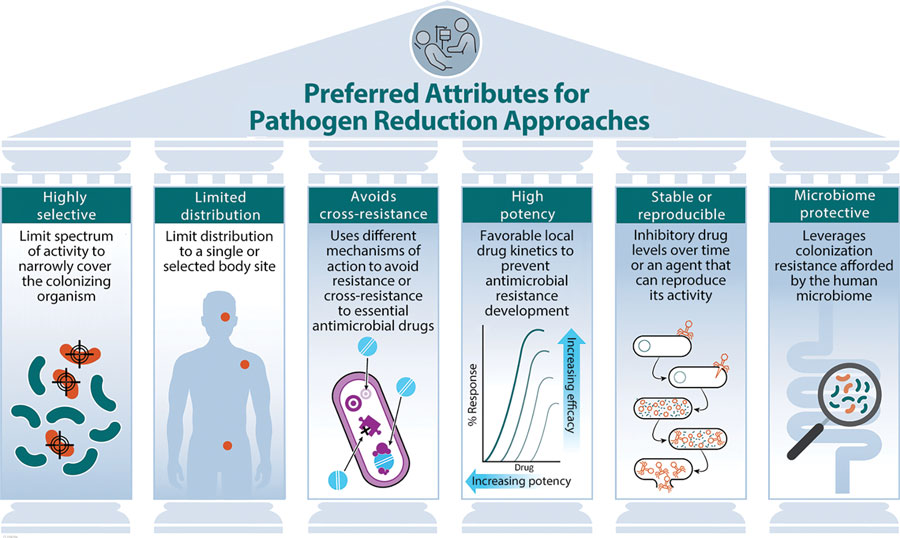Volume 30, Number 6—June 2024
Perspective
Decolonization and Pathogen Reduction Approaches to Prevent Antimicrobial Resistance and Healthcare-Associated Infections
Figure

Figure. Preferred attributes for decolonization and pathogen reduction approaches to prevent antimicrobial resistance and healthcare-associated infections. Examples of these approaches include the following: highly selective, e.g., selective digestive decontamination targeting aerobic gram-negative bacilli; limited distribution, e.g., nonabsorbable antimicrobial drugs; avoids cross-resistance, e.g., chlorhexidine biocide; high potency, e.g., preventing selection of resistant mutations; stable or reproducible, e.g., use of phages to decolonize or reduce bacterial burden; and microbiome protective, e.g., using the human microbiome to spare beneficial microbes.
Page created: April 19, 2024
Page updated: May 22, 2024
Page reviewed: May 22, 2024
The conclusions, findings, and opinions expressed by authors contributing to this journal do not necessarily reflect the official position of the U.S. Department of Health and Human Services, the Public Health Service, the Centers for Disease Control and Prevention, or the authors' affiliated institutions. Use of trade names is for identification only and does not imply endorsement by any of the groups named above.